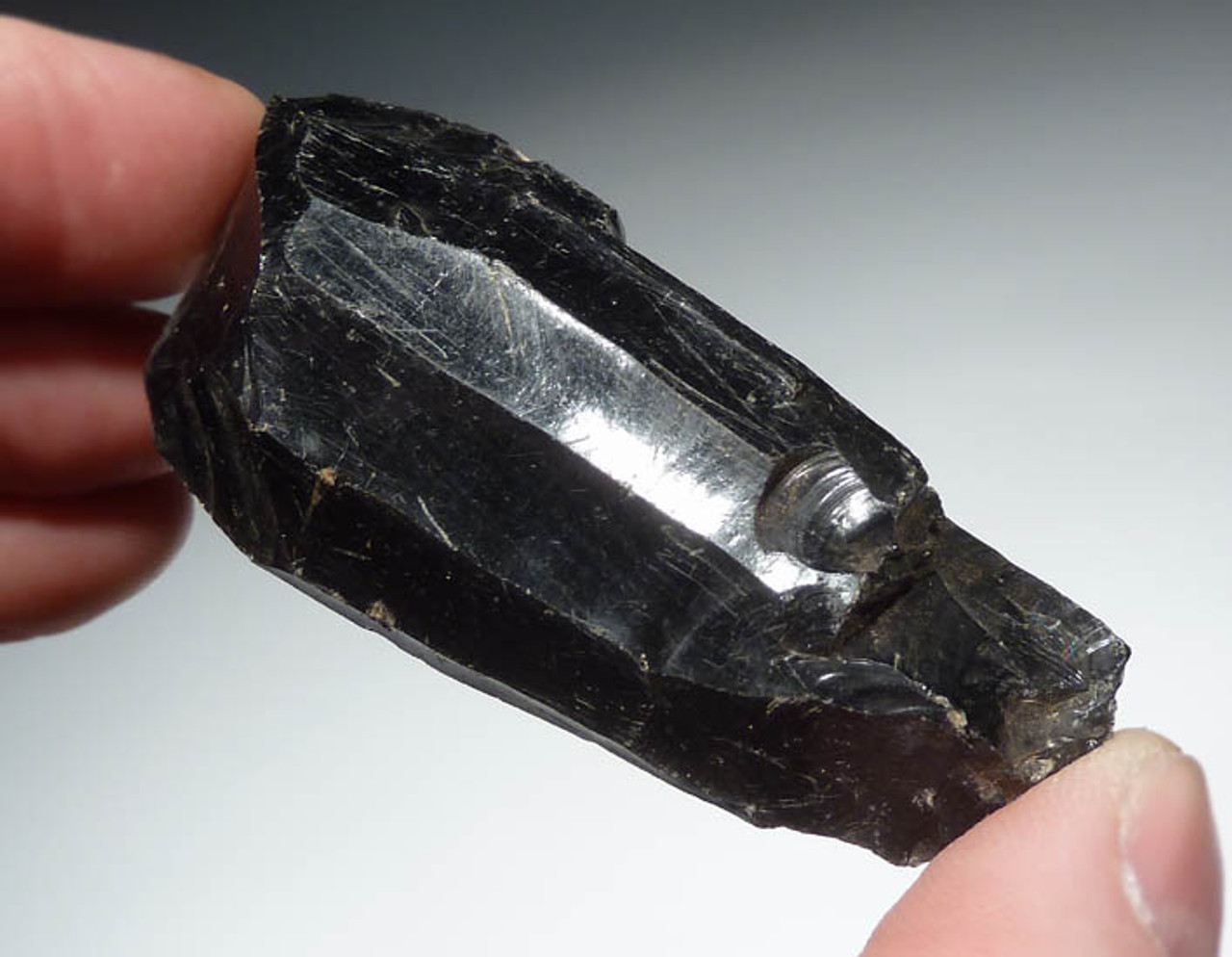Product Description
SEE MORE PRE-COLUMBIAN ARTIFACTS
This is an excellent educational or exhibit set of 3 artifacts of obsidian tool manufacture in the ancient Pre-Columbian Indian culture of Teotihuacan in Mexico. Obsidian craft was one of the hallmarks of the Teotihuacan society and obsidian workshops were a huge part of the work and production of their trade and skill. Obsidian objects made by Teotihuacan workshops were used and traded all over Central America. This set offered here includes a discoidal flake core for making ordinary scrapers, a prismatic blade core for making the popular obsidian bladelets used in many weapons. The final piece is a EXQUISITE unifacial blade scraper showing the finest possible workmanship in this common type of tool. So with this authentic artifact set, you have the two basic forms of obsidian cores from which flake tools were made, and a superbly made finished flake tool.
HISTORY
In the first millennium A.D., the central American mega-city of Teotihuacan was THE largest city in the pre-Columbian Americas and had a broad influence on its neighboring cultures both, in simultaneous existence to it and even long after. At its peak in 450 A.D., with an estimated population exceeding 200,000 at this time, it was one of the largest cities in the world. The founders of this great city are a mystery and much debate has circled around who exactly built the city. Because the inhabitants seem to have been multi-ethnic (Nahua, Otomi, Totonac and Mayan) the culture is not attributed to a specific ethnicity or tribe but is called TEOTIHUACAN or TEOTIHUACANO.
Teotihuacan was an enormous industrial city and trading center housing a variety of trades and craftspeople. The quality of artistry in the thousands of mural paintings from Teotihuacan artists rivaled anything that was to be produced by many master painters of Renaissance Europe much later in time. Perhaps, the most famous industry the city was known for was its extensive production of obsidian objects.
Many of the same gods worshipped by other pre-Columbian cultures of the surrounding region were worshipped by the inhabitants of Teotihuacan. Gods such as the Feathered Serpent and the rain god, which were later worshipped by the Aztecs in their own culture. It is believed the Mayans and later period Aztecs, along with many other tribes, were heavily influenced by Teotihuacan and like those cultures, human sacrifice was practiced in Teotihuacan. This is evidenced by numerous human skeletons showing signs of ritual sacrifice, excavated from the sites where the pyramids were built.
The end of Teotihuacan is as much a mystery as its beginning. Most recent studies now show the city's decline began some time around the 6th century A.D. and may have been caused not by a conquering neighbor but by internal civil unrest and uprising.
 US DOLLAR
US DOLLAR
 EURO
EURO
 AUSTRALIAN DOLLAR
AUSTRALIAN DOLLAR
 CANADIAN DOLLAR
CANADIAN DOLLAR
 POUND STERLING
POUND STERLING












